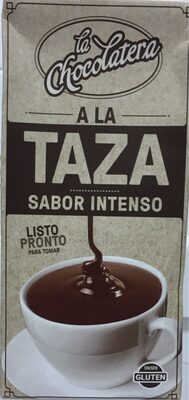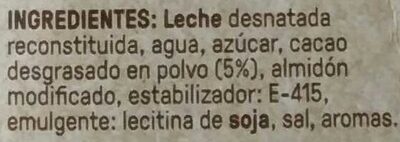A La Taza - La Chocolatera - 1 l
Aquesta pàgina del producte no està completa. Podeu ajudar a completar-la editant-la i afegint-hi més dades a partir de les fotos ja disponibles, o fent-ne més amb l'aplicació de androide o iPhone / iPad. Gràcies!
×
Codi de barres: 8410109108408 (EAN / EAN-13)
Nom comú: Preparado Lácteo con Chocolate
Quantitat: 1 l
Empaquetament: Cartó, Paquet, SIG
Marques: La Chocolatera
Categories: Snacks, Postres, Aperitius dolços, Cacau i derivats, Xocolata, Postres de xocolata
Etiquetes, certificacions, premis:
Lliure de gluten, FSC, Punt verd

Llocs de fabricació o processament: España
Codi de traçabilitat: ES 15.00349/O CE
Països on es va vendre: Espanya
Matching with your preferences
Entorn
Empaquetament
Transport
Report a problem
Fonts de dades
Producte afegit per openfoodfacts-contributors
Última modificació de la pàgina del producte per october-food-facts.
La pàgina del producte, també editada per autorotate-bot, bojackhorseman, dotsuke, kiliweb, musarana, roboto-app, yisus, yuka.WHZBcVBMd0huTVFveE13RDN5eUU4ZGt2Nk02R0JUS0plOWMxSVE9PQ, yuka.YmFvcEFyOEZxL3NOcWNBc3hDK0lvdEJUeGJPV2VtcVVBT3NOSVE9PQ, yukafix.










